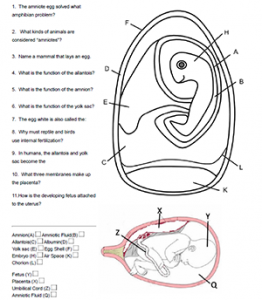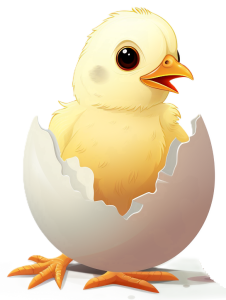
This activity includes a section of reading that explains how the amniote egg allowed amphibians to make a complete transition to land, by carrying the water needed for development inside a specialized egg.
The amniotic egg evolved from earlier egg-laying vertebrates, likely in response to the challenges of living on land. The transition to land required the ability to prevent dehydration, exchange gases efficiently, and provide nutrients and protection to the developing embryo. The amniote egg, with its specialized membranes and the ability to retain water, allowed reproduction to occur outside of water, enabling vertebrates to colonize diverse terrestrial environments.
The key adaptations that led to the amniote egg included:
- Amnion: The amnion is a membrane that encloses the embryo in a fluid-filled sac, providing protection against drying out and impacts.
- Chorion: This membrane facilitates gas exchange and helps prevent the egg from drying out.
- Allantois: Membrane used for waste storage.
- Yolk Sac: It contains the yolk, providing nutrients for the developing embryo.
The text then compares the amniote egg of oviparous animals, like birds and reptiles, to the placenta and amnion of viviparous animals like mammals. Students must color two images to model the parts of the amniote egg: albumin, chorion, allantois, amnion, and yolk.
Students must answer basic questions regarding the egg, the answers can be found my carefully reading the activity instructions.
This is a great activity to pair with a demonstration where you soak an egg in vinegar over a couple of days to show how the shell of reptiles differs from bird shells.

Other Resources on the Birds, Reptiles, and the Amniote Egg
Animal Reproduction and the Egg – Guided Learning
Notes and Slides on Reptile Taxonomy and Anatomy
Snake Detection Hypothesis (CER) – examine a possible evolutionary cause for fear of snakes
Grade Level: 7-12
Time Required: 20-30 minutes

